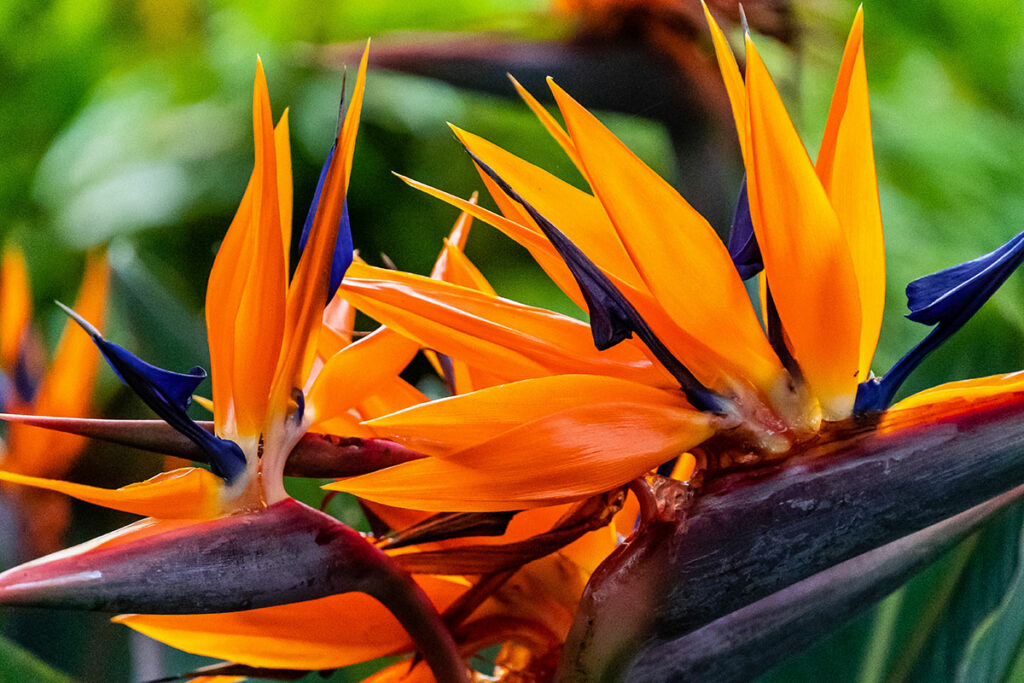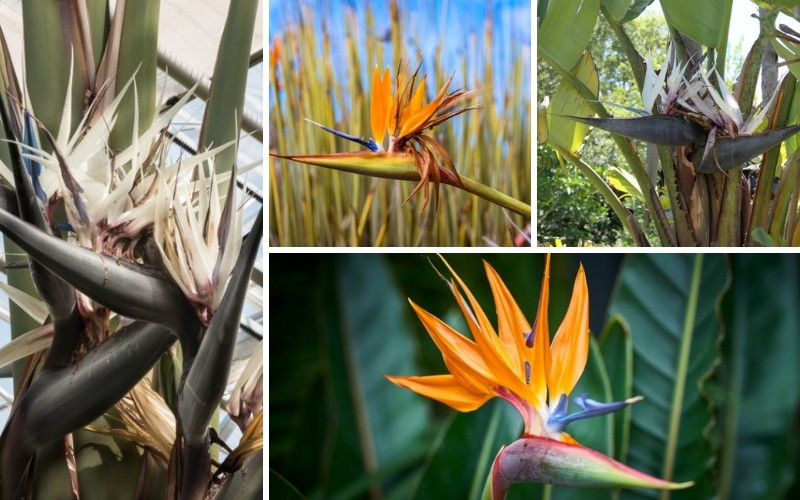
Bird of Paradise is easily one of the most striking plants. Belonging to the Strelitzia genus, this plant’s name comes from its uniquely bird-shaped flower. The blooms have a crane-like appearance, usually with a color combination reminiscent of tropical birds.
The plant does well in warm and humid conditions, which is hardly surprising since it originates from South Africa. In the United States, the plant thrives in hardy zones 10-12, which are generally warm and wet.
The different plant varieties can differ widely in size. Like the S. Reginae, some grow only up to six feet tall, whereas others like the S. Alba grow up to a sprawling 30 feet! You can have it as a houseplant or a hallmark landscaping gem, depending on your plant choice.
5 Common Types of Bird of Paradise
Here are some of the five most common Bird of Paradise plant types.
Strelitzia Reginae
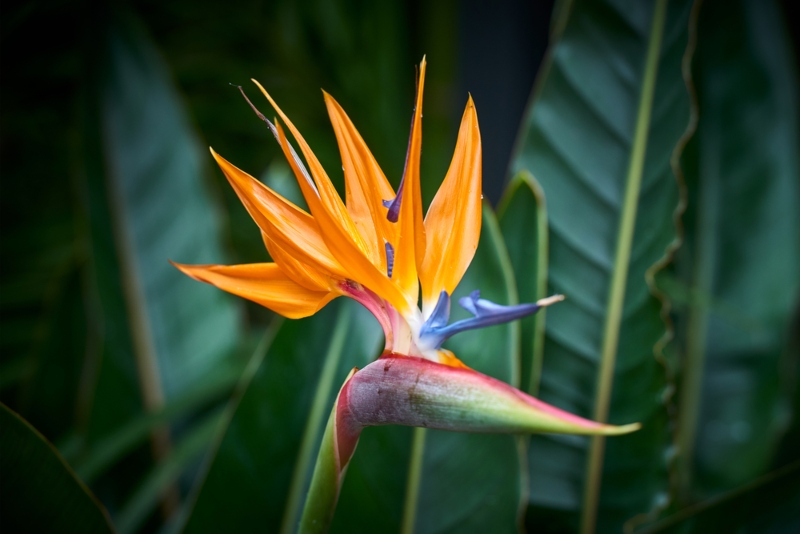
The S. Reginae plant is the most common type of Bird of Paradise in the United States. It is also the official flower of the City of Los Angeles. It has the proverbial yellow and orange flowers with a crane-like appearance.
It is a perfect indoor plant as it only grows up to six feet tall and four feet wide. This plant is a good size for your office or your house.
On the flip side, the S. Reginae plant takes about ten years to mature. The plant can delay its blooming time tremendously, which is quite a drawback. However, the plant has luxurious, leathery green foliage that makes up for the delay in flowering.
The S. Reginae plants thrive in moist soil, so make sure to water the plant regularly. Never allow the soil in the pot to get completely dry. The top 3 inches can be dry, but the rest must always be moist.
Additionally, it is essential to avoid exposing your plant to cold drafts. To ensure consistent growth, keep rotating the pot so that each part of the plant gets sufficient exposure to the sun. Finally, don’t hesitate to prune broken and discolored leaves: it gives room for new ones to grow.
Strelitzia Alba
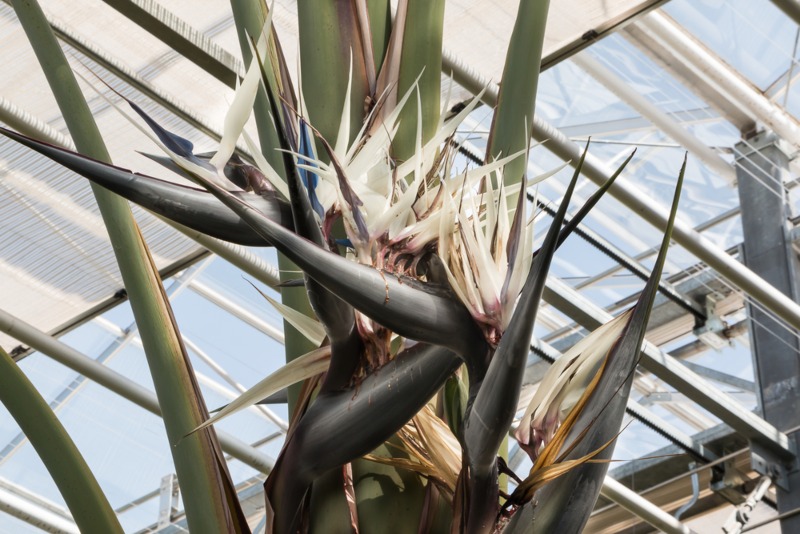
The S. Alba plant gets its name from its majestic white flowers, which bloom between July and December. Unlike the Reginae variety, S. Alba grows a sprawling 30 feet tall. As a result, it is rarely found anywhere but in the wild, where its height allows it to access sunlight easily.
This majestic plant has an uncanny resemblance to the banana plant, which is why it is also known as the white-flowered banana plant. Its large leaves give it a flair reminiscent of the traveler’s palm.
The plant needs plenty of water and warmth to thrive. As a result, it is ubiquitous in its native South Africa and Madagascar, where there are optimal growth conditions.
Strelitzia Nicolai
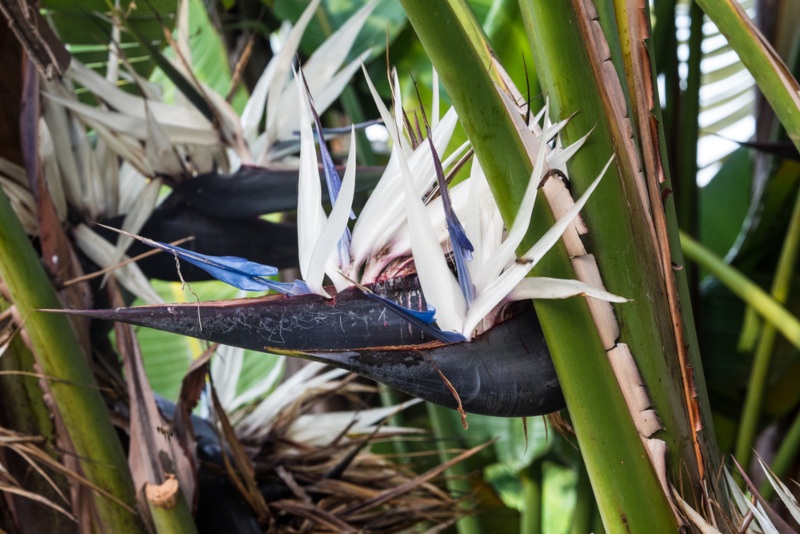
The Strelitzia Nicolai is another imposing plant with beautiful white and blue flowers. It can grow up to 20-feet tall, and its leaves are just as huge, reaching 7 inches tall and 18 inches long. So it is hardly surprising that this big beautiful plant has a place at Disneyland where it forms part of the landscaping.
The plant thrives in wet, humid, and warm conditions. However, given its enormous size, it can only grow outdoors comfortably to reach its full growth potential.
If you have an S. Nicolai plant in your garden, you must ensure that it gets enough sunlight. Thankfully, its height comes in handy, allowing it to tower over other plants and access the sun without hindrance.
You also must follow a regular watering schedule for the plant. However, this does not mean that you should overwater it. Overwatering the plant is a leading cause of dropping leaves and excessive splitting.
The goal is to keep the soil moist enough but not too wet to become soggy. As long as your plant is accessing enough sunlight, watering it should not be a problem.
Additionally, don’t forget to fertilize your plant at least once a month throughout the fall. This will ensure that it gets adequate nutrients for growth. The plant is fertilized in its natural environment by birds, so you’ll have to do it yourself.
Strelitzia Juncea
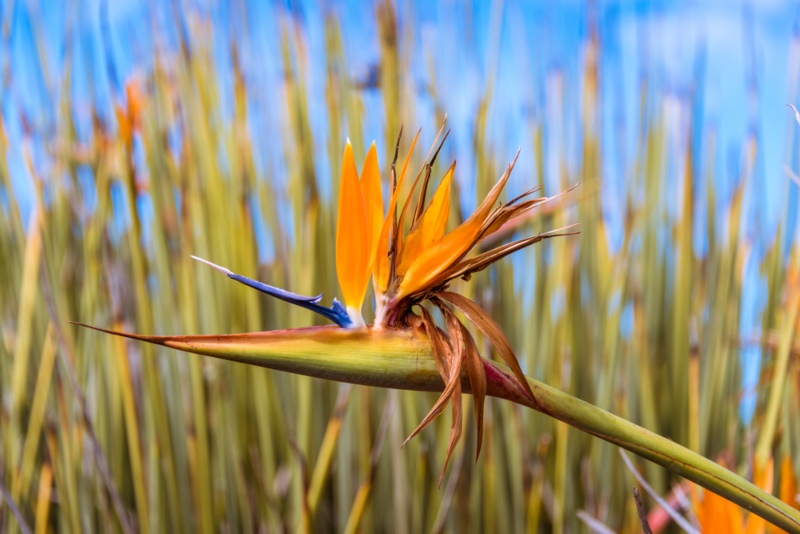
The S. Juncea is the most unique of the five Bird of Paradise varieties. Unlike the other plants with large, silky leaves, this plant has numerous reed-like leaves resembling a rush. In addition, its leaves are long, thin stalks that grow in clusters.
Due to its reed-like appearance, its flowers seem to sprout out of the blues. The flowers also have a unique color combination of pink and yellow petals.
These plants thrive in marshy environments, which means they require plenty of water to grow well. Like the Reginae variety, they also extend to a height of up to 6 feet, making them perfect for indoor planting.
When choosing a location for your plant, avoid having it close to ventilators with cold drafts. These will negatively impact the growth of your plant.
You also want to ensure that your plant gets access to adequate sunlight in the home or office. Therefore, it is wisest to choose a location near a window or door where there is plenty of sunshine.
Additionally, the best pots for this plant are porous pots that allow adequate aeration. You might want to place a saucer underneath the pot to avoid destroying floors and carpets due to moisture accumulation.
Strelitzia Caudata
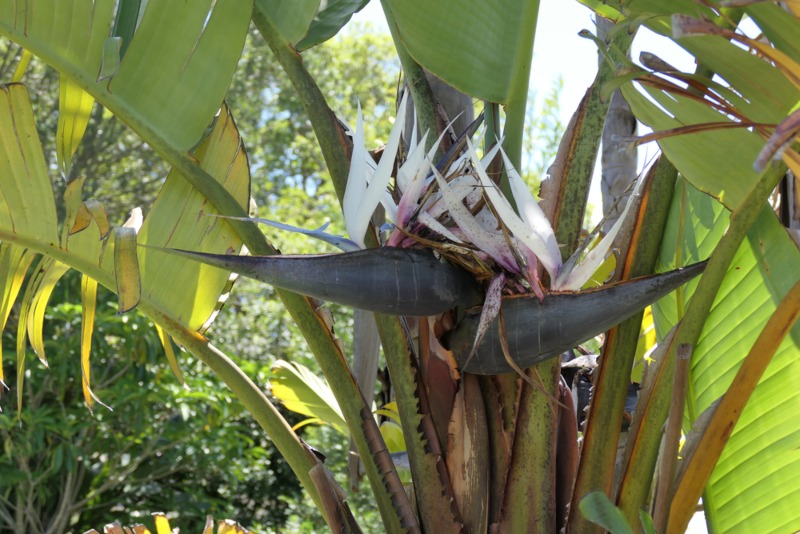
Also known as the Mountain Strelitzia, this is one of the rarest kinds of Bird of Paradise to find. It grows almost exclusively in the mountains of Eswatini. In a home setting, the plant only thrives if it is grown by an expert botanist.
The plant is one of the more imposing types of the Birds of Paradise flowers, growing to a height of up to 20 feet. It also has large banana-like leaves that give it rich and luxurious foliage. Planting it indoors is, therefore, an ill-advised move.
Conclusion
There is no question that the Bird of Paradise is one of nature’s most exquisite plants. There is a lot to love about this plant, from its rich, luxurious foliage to the beautiful, bird-shaped flowers.
Fortunately, caring for a Strelitzia plant is not hard at all. As long as you provide it with adequate sunlight, water and humidity, the plant will thrive into a beautiful plant.
Just follow the tips in the article, and you’ll have an easy time caring for your plant.





